During our first tour through South Africa, we kept discovering new, magnificent spots. We had read something about the De Hoop Nature Reserve in South Africa somewhere, so we headed there. The first trip was already fantastic, but the second visit (January 2025) topped everything. The reserve once again awaited us with breathtaking landscapes, sand as fine as powdered sugar, a turquoise ocean, green dunes, rugged cliffs along the coast, natural rock pools, and plenty of variety.
We can only repeat ourselves and tell you that a trip to the De Hoop Nature Reserve in South Africa is a must on any trip along the Garden Route. You certainly won’t regret it. In the following article, you’ll learn everything about the reserve and get the latest tips from us. Enjoy browsing and feel free to write us a message after you’ve seen it for yourself.
What else you should know
- Best time to travel to South Africa
- Currency of South Africa
- South Africa Entry & Visa
- Round trip with a rental car
- Garden Route South Africa
- Winelands South Africa
- Panorama Route South Africa
- Northern Cape Round Trip
- What else you should know
- The De Hoop Nature Reserve
- Getting to De Hoop Reserve
- Sand dunes in the De Hoop Nature Reserve
- The De Hoop Vlei wetland
- Whale watching
- Hikes in the park
- Our and other accommodations
- Our video from the De Hoop Nature Reserve
- FAQ about the De Hoop Nature Reserve
The De Hoop Nature Reserve
The beautiful De Hoop Nature Reserve in South Africa is located between Mossel Bay and Cape Agulhas, just under 250 kilometers from Cape Town. The park is approximately 35,000 hectares in size and was only declared a national park in 1957. This area is also called the “Jewel of the Western Cape.” Although the journey is a bit arduous, it is definitely worth it. The enormous sandpit with its partially overgrown dunes and the deep blue sea in the background truly takes your breath away.
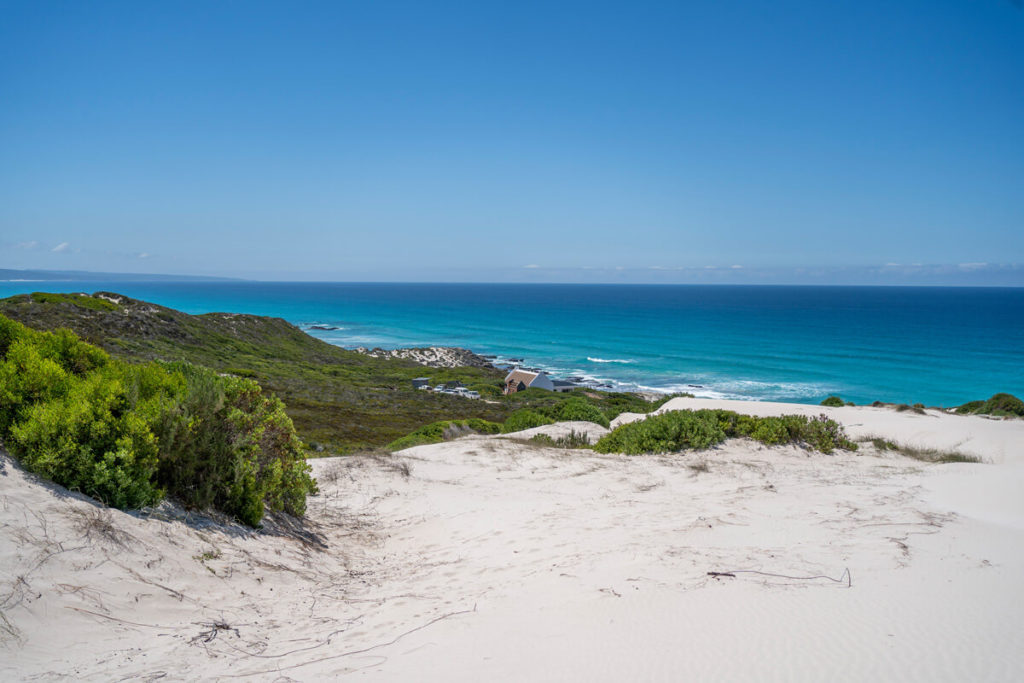
With a bit of luck (and we were lucky that time), you might even spot whales and dolphins in the sea (whale season is from May to November). Simply gigantic! The national park also offers some beautiful hiking trails, which we’ll introduce in more detail below, the wetland “De Hoop Vlei” (De Hoop Vlei), as well as 86 mammal species, 250 bird species, 14 amphibian species, and 50 reptile species. While the reserve is no longer an insider tip, it’s still worth recommending!
The reserve is open daily from 7 a.m. to 6 p.m., and until 7 p.m. on Fridays. There is no petrol station in the reserve, so it’s best to fill up before your tour in Swellendam or Ouplaas (Wydgeleë). You pay the entrance fee (R50 per person) at the gate with cash or credit card. Pack hiking boots, a swimsuit, sunscreen, a hat, plenty of drinks, and snacks. A small restaurant with a great view of the ocean will open in February 2025 in De Hoop near the Koppie Allen car park. Click here for the brochure.
Getting to De Hoop Reserve
Getting to De Hoop Nature Reserve in South Africa may not be the best, but don’t let that discourage you. From Swellendam, you first have to take the N2 towards Stormsvlei. After about 7 kilometers, turn onto the gravel road to Oulpass (the second exit). Then continue to the small village of Oulpass and follow the signs to the national park (“De Hoop”). The dirt road there is in very good condition and largely free of potholes (as of January 2025). In 2016, this part was really no fun!
At the park entrance, you have to sign a list and pay 50 Rand per person entrance fee. Then you continue for a few kilometers on a bumpy track. Follow the signs towards “Koppie Alleen”. The road to the parking lot has now been paved with cobblestones, so it’s a very pleasant drive. We drove there again in a small car the second time, and it was absolutely no problem. You can park your car for free and then walk to the dunes. It took us 1 hour and 15 minutes from the turnoff from the N2 to the parking lot.
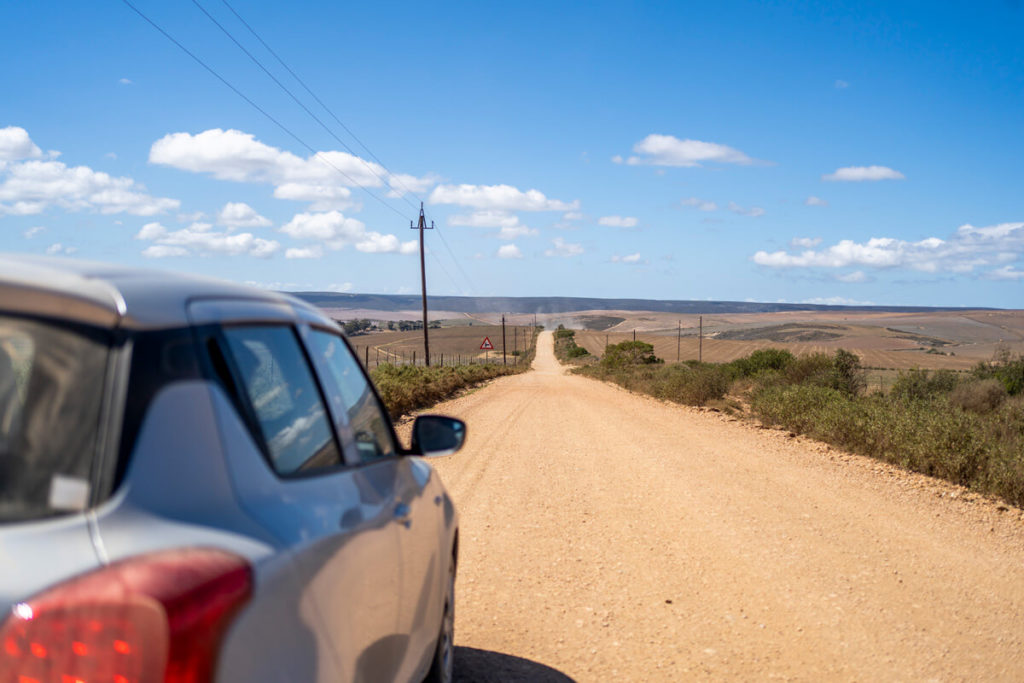
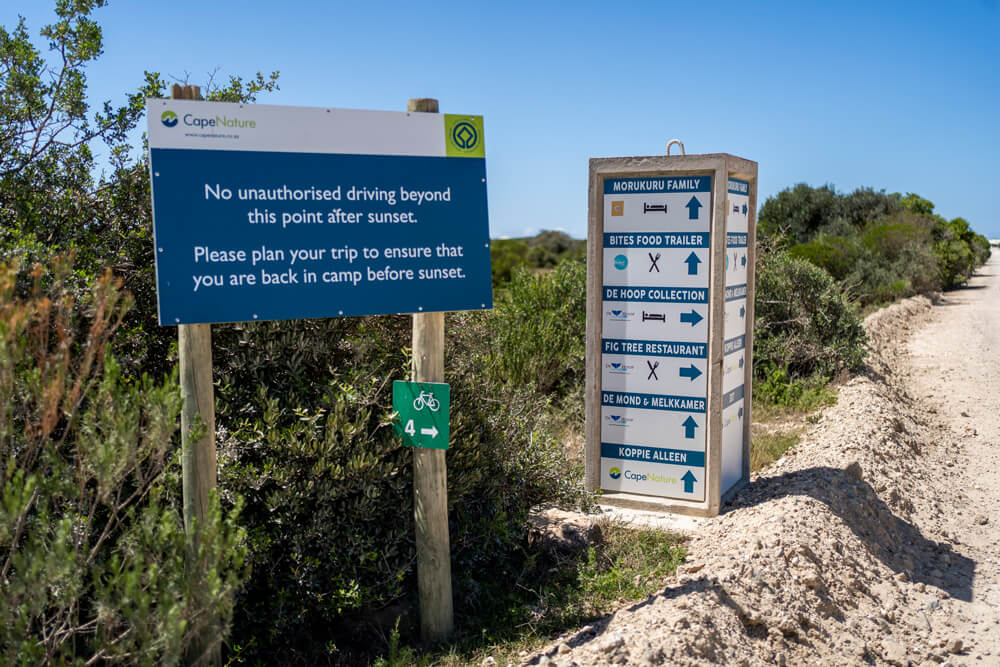
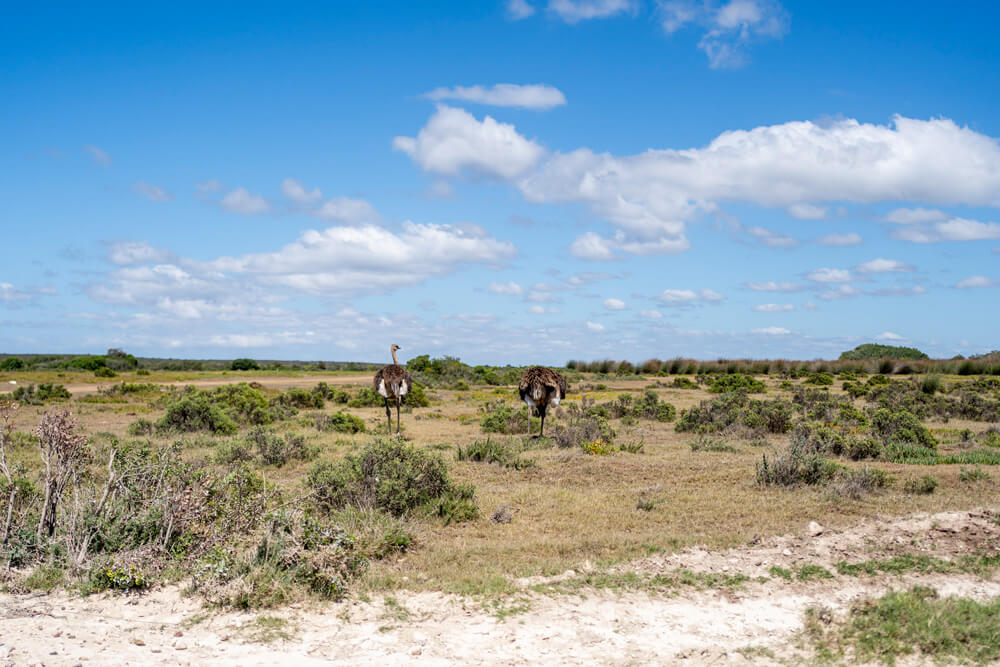
Important note: The approach/exit via Malgas is also possible, but is not as well developed as via Spitskop/Ouplaas. We drove both routes specifically to check it out for you. Google Maps shows 67.9 km from Swellendam to Koppie Alleen, and a travel time of 72 minutes. That’s about right. It took us 10 minutes longer.

Sand dunes in De Hoop Nature Reserve
From the parking lot, walk a few steps toward the sea before you reach a small wooden walkway. If you walk over it, you’ll suddenly find yourself in the middle of the white sand dunes and you’ll hardly be able to believe your eyes. On our first visit (October 2016), it was so windy we almost lifted off the ground. In January, it was calm, hot, and very sunny. Take off your shoes right away and enjoy the fine sand between your toes. The view over the dunes and the sea is truly unique!
At first, we had to put on our sunglasses because the sand was so blinding. Be sure to pack sunscreen and a hat, because in summer the sun beats down so hard there. We ran around again, jumping up and down. The joy on our faces was unmistakable. The white sand dune below us, the deep blue and turquoise sea in front of us. We felt so free! On our first visit, we sat under a rock and watched whales in the sea – an unforgettable moment.
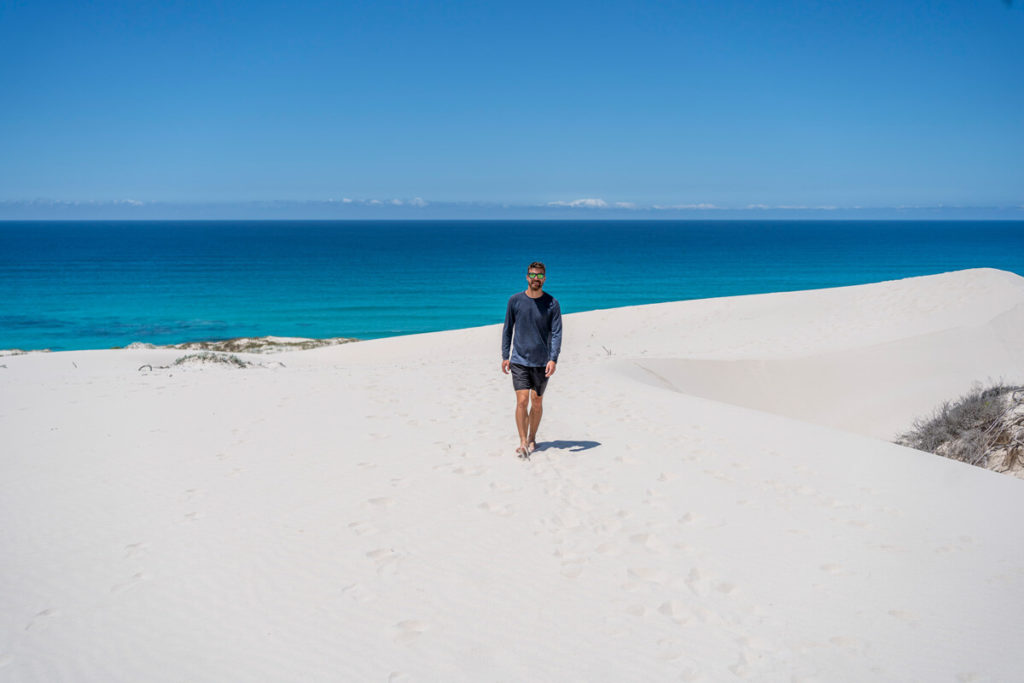
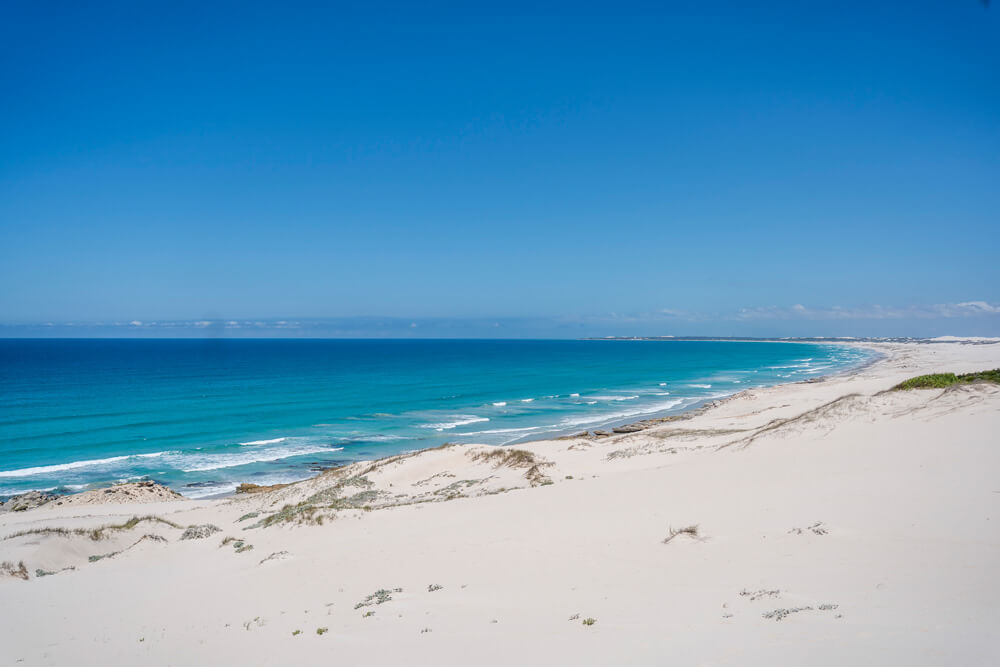
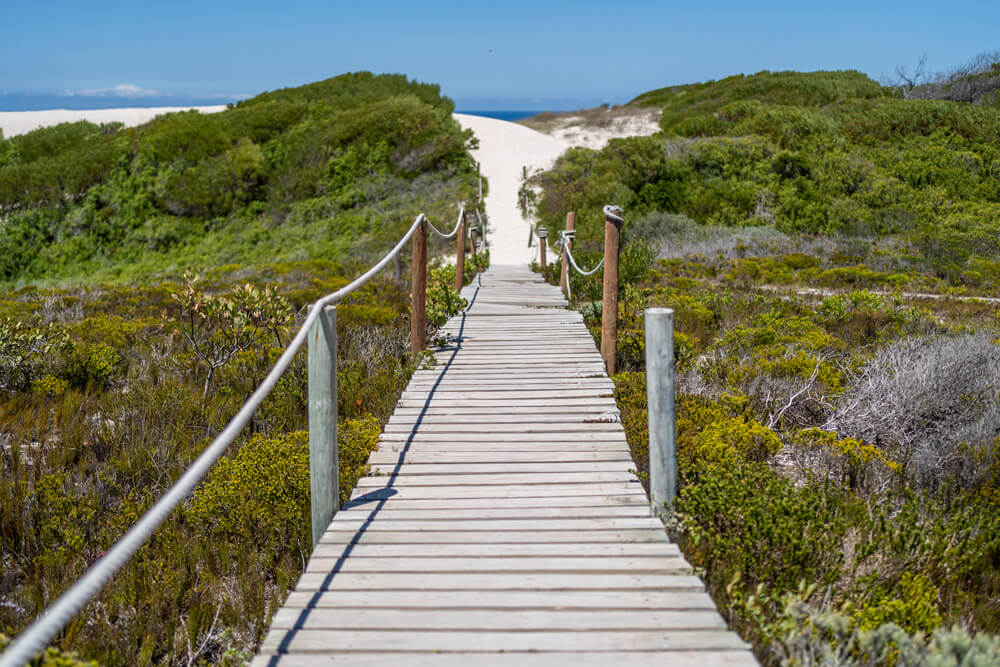
If you walk towards the sea, The rugged but beautiful coastline stretches out to the left and right of you, and in front of you. There’s also a kind of tidal pool where you can swim safely. You can now walk left or right and explore the reserve. One path (right) leads along the sea for about 8 km (towards Die Mond), the other path (left) leads along the coast for about 5 km (towards Vaalkrans).
Along your way, you’ll repeatedly find secluded bays and beaches where you can enjoy your time to the fullest. Of course, we couldn’t resist the opportunity and jumped straight into the water. Surprisingly, the sea was much warmer than expected. We don’t know the exact temperature, but our Baltic Sea is definitely colder, even in summer.
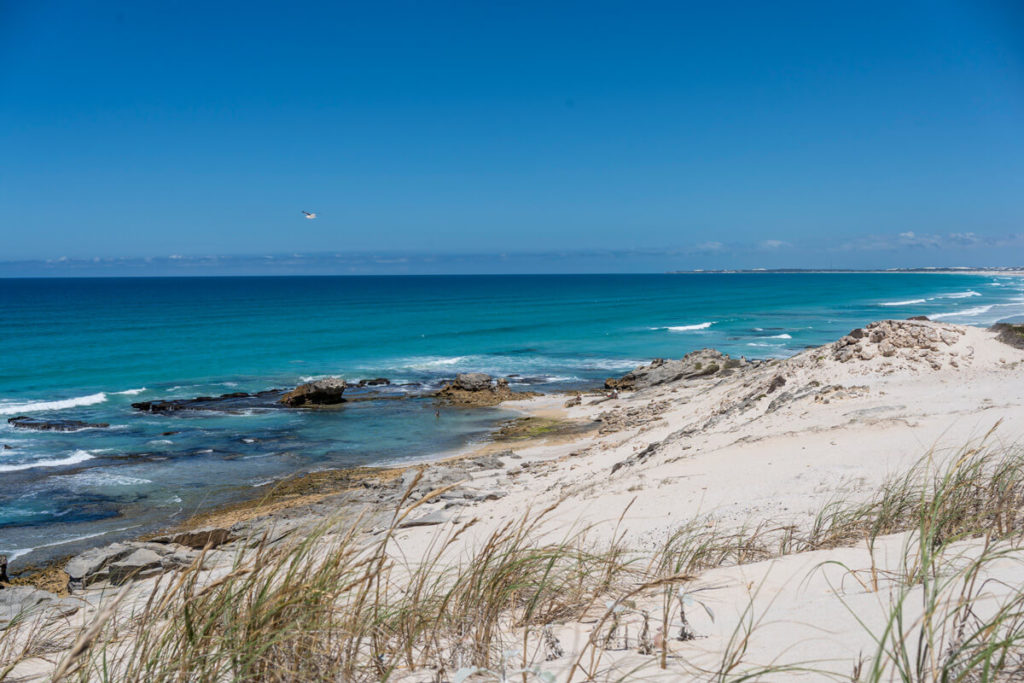
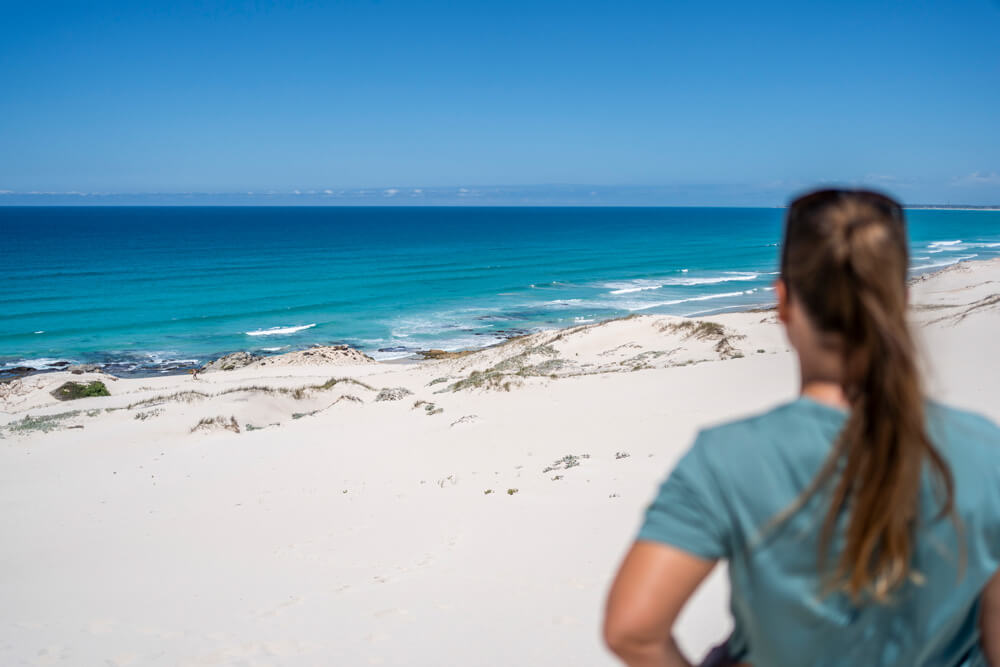
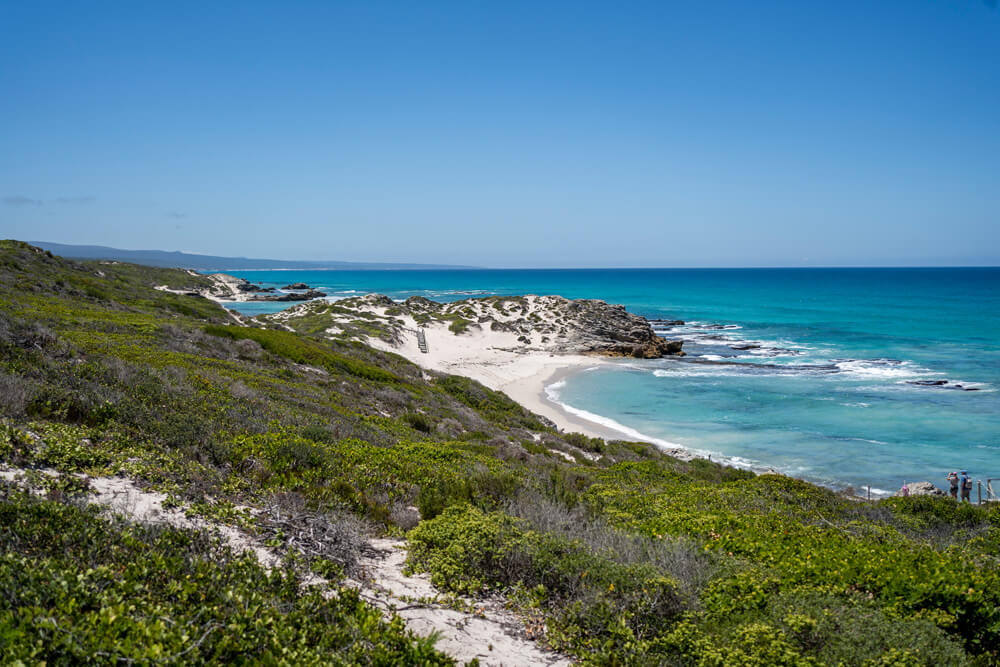
The De Hoop wetland Vlei
In the west of the protected area is “De Hoop Vlei”, one of the largest brackish water lagoons in southern Africa. Thousands of water birds can be seen here in search of food. Depending on the season and water level, you’ll see a wide variety of species. If you’re there at the right time, you’ll see flamingos, herons, Egyptian geese, oystercatchers, or Cape vultures. You might also spot mountain zebras, eland buffaloes, or even bonteboks in this area.
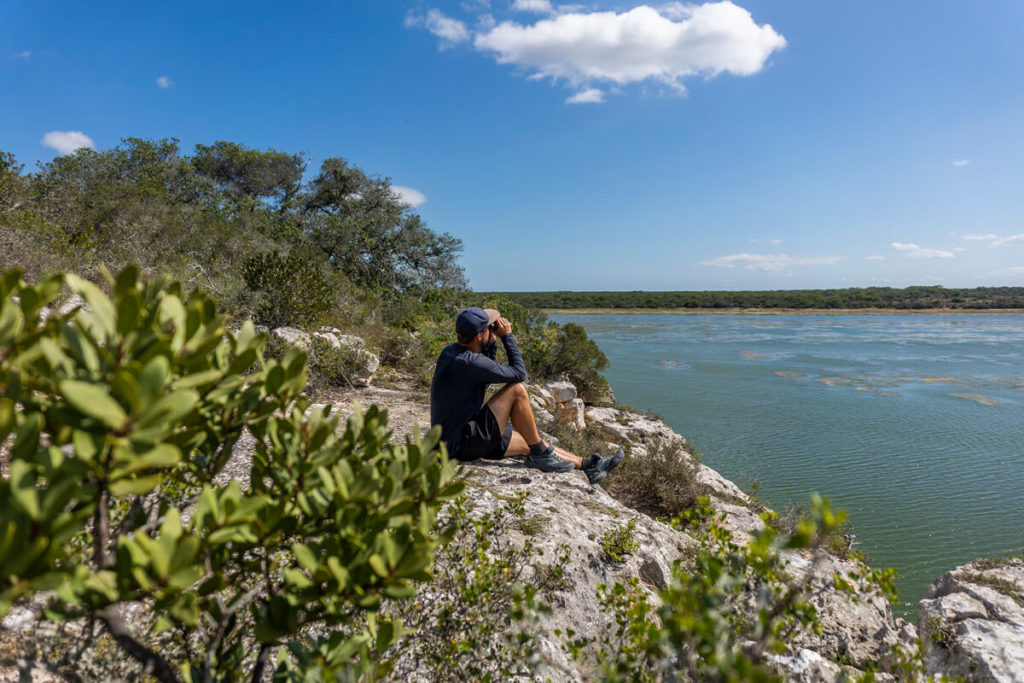
The best place to start your exploration is at the Park Office next to the Fig Tree Restaurant. There you’ll not only find great accommodations directly within the reserve (De Hoop Collection*), but you can also book various tours. They offer boat trips through the wetland, game drives, guided bird walks, hikes and bike tours, and night sky viewing. The good thing is that you can also do these activities as a day guest. It’s best to call ahead and ask about the next tours and times.
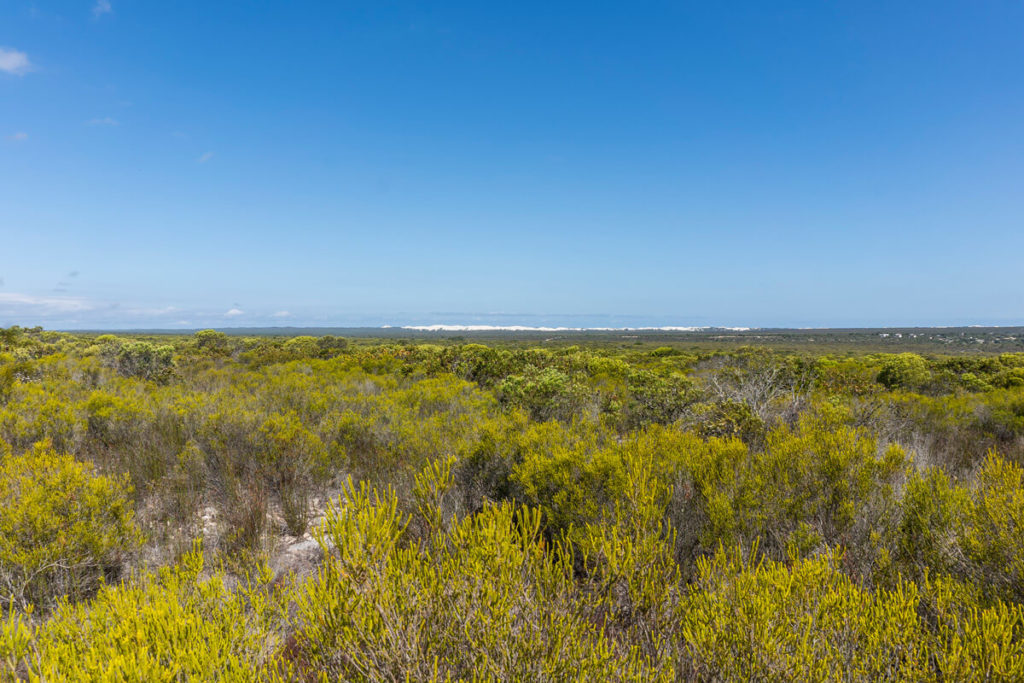
After enjoying coffee and cheesecake at the Fig Tree Restaurant, we rented two mountain bikes (R200 pp half-day | R350 pp full-day) to explore the reserve further. There are various trails that you can explore on your own. We found trail number 2 to be really cool, with fantastic views and some cool animal encounters. You can even cycle to the ocean (Koppie Alleen) via trails 3 and 4. It’s best to ask for the hiking and biking map at reception and decide for yourself.
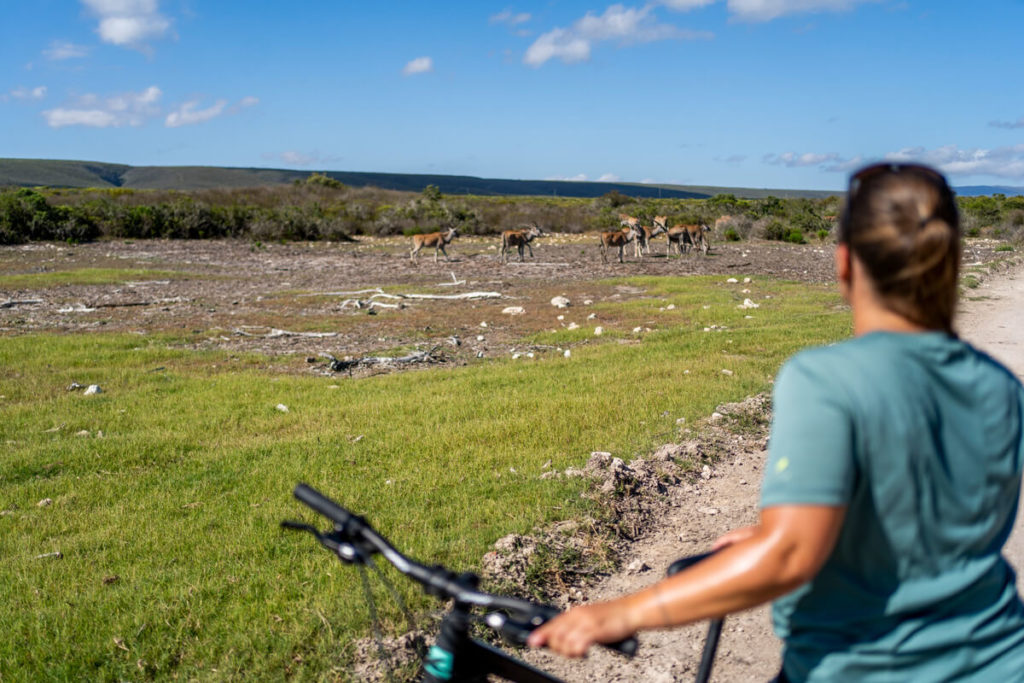
Whale Watching
Did you just see that? Over there! Look! Is that a whale? Oh my God, I think it’s a whale! And indeed, we had an absolutely lucky day on our first visit! A southern right whale leaped out of the water in a high arc – again and again. It slapped its enormous tail fin against the surface, leaving one mighty splash after another.
We were so stunned, we couldn’t speak for a few minutes. This moment will remain forever unforgettable. Seeing these giant sea creatures in the wild is hard to describe. According to Cape Nature, around 120 whales return to these waters every year to mate and breed.
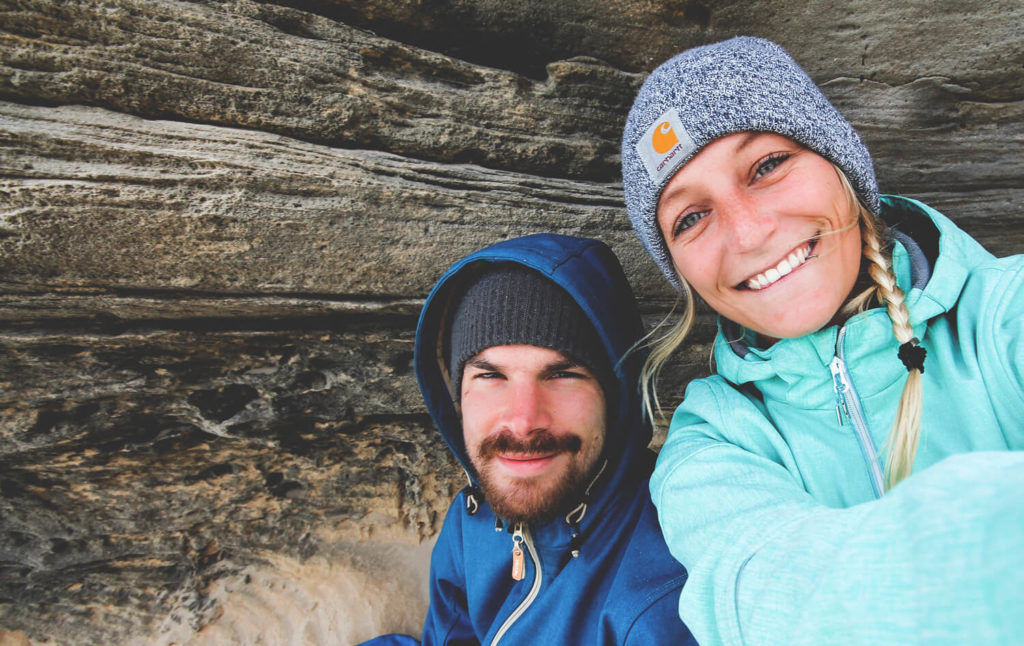
You feel so alive, so close to the animals, and also a little connected. Unfortunately, we didn’t have a telephoto zoom lens to photograph the whale. But at least this moment will remain in our minds forever. The waves lashed against the rocks off the coast, the wind blew incessantly. But the sun was shining, and the sky was its most beautiful shade of blue. With a bit of luck, you can generally spot whales off the coast between May/June and November.
Hikes in the Park
There are various hiking trails in the national park, most of which start from the main camp. The trails lead you through very different vegetation zones and also offer you the opportunity to spot wild animals. For example, there is the “Coot Trail” (red), which is the shortest trail. You only need to allow about an hour. The yellow “Heron Trail” takes around 2 hours. Then there is the blue “Grebe Trail,” which can be hiked in 3 hours. From there, you have a fantastic view of De Hoop Vlei.
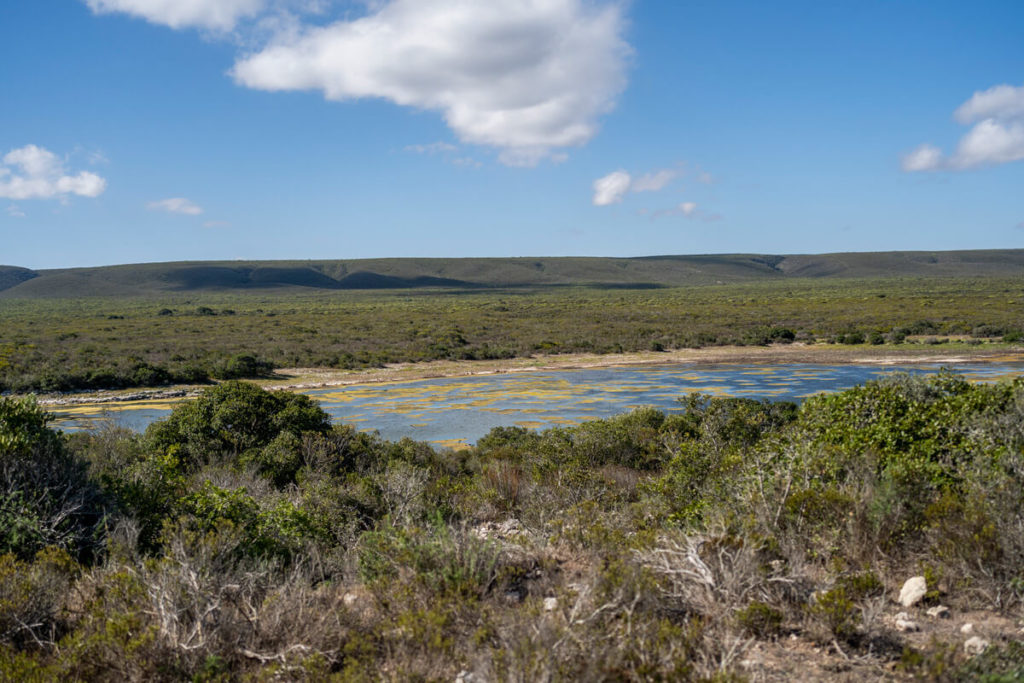
The longest hiking trail is the “De Hoop Whale Trail” at just under 54 kilometers (from Potberg Hut to Koppie Alleen). You should plan five days for this hike. Advance reservations are required, as the number of participants per day is limited. You will stay overnight in various huts during your hike. More information can be found here: Whale Trail. We passed some hikers on their last leg of the journey to the parking lot in De Hoop Reserve.
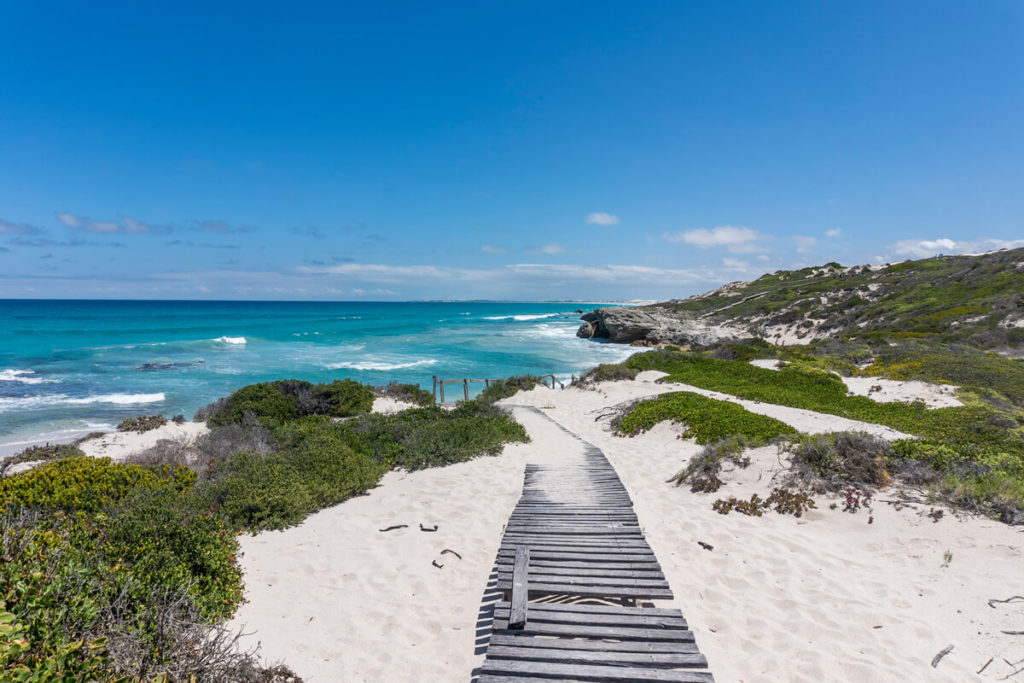
Our and Other Accommodations
We spent two nights at the beautiful A Riverbed Guesthouse* in Swellendam. It wasn’t important for us to stay directly in the park. But you can, of course, do that too. While there aren’t many accommodations, there are still a few. This way, you can fully enjoy the unique nature without having to leave after just a few hours.
The park offers various accommodations from the De Hoop Collection*, for example. These are located in the middle of the wetland, some of which are self-catering. On-site, you’ll also find the Fig Tree restaurant, two beautiful pools, and a spa.
Those who prefer luxury can take a closer look at the Morukuru Beach Lodge*. It offers beautiful lodges with access to a hot tub and ocean views. Everything is of very high quality and stylishly furnished. You can relax and swim a few laps in the complex’s beautiful outdoor pool.
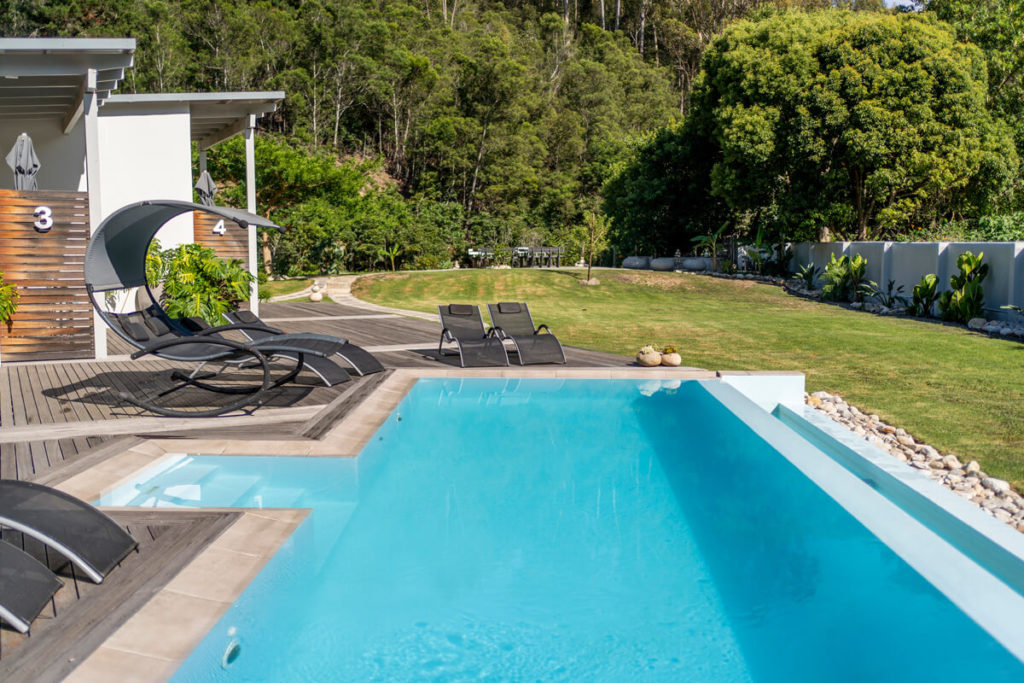
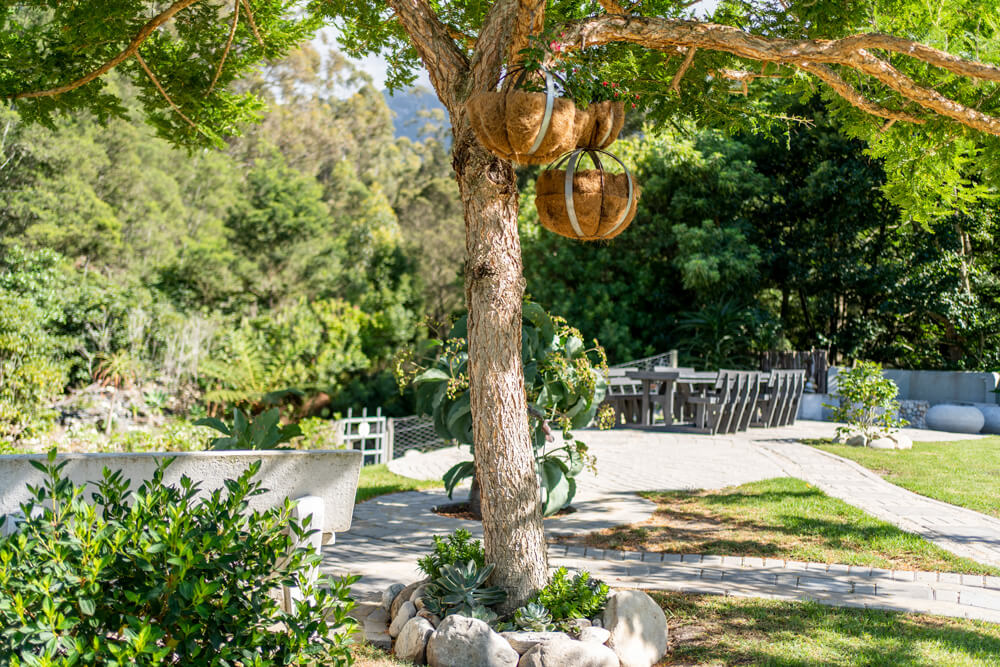
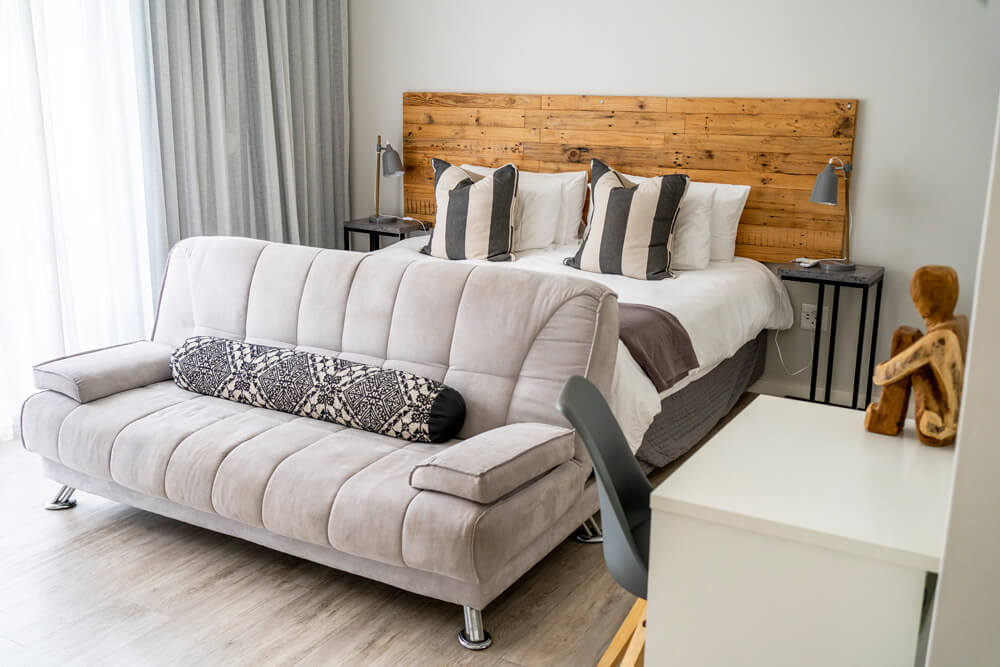
Our video from the De Hoop Nature Reserve
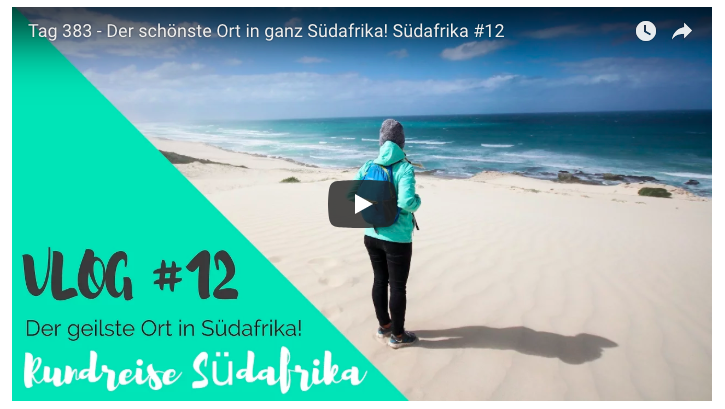
FAQ about De Hoop Nature Reserve
Is a trip to De Hoop Nature Reserve in South Africa worth it? How much does the entrance fee to De Hoop Nature Reserve cost? How far is it to De Hoop Nature Reserve? Can I go hiking there? Can I stay overnight at De Hoop Nature Reserve?